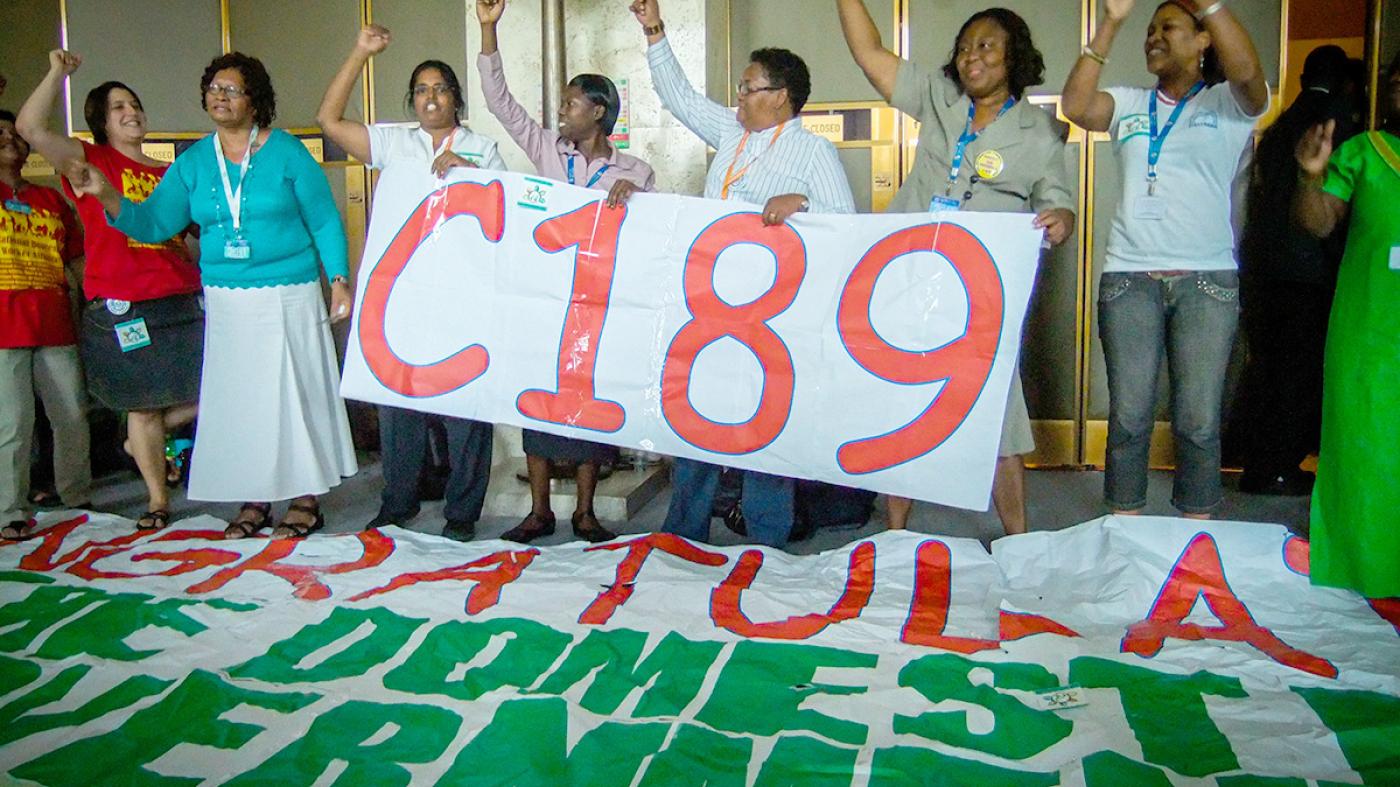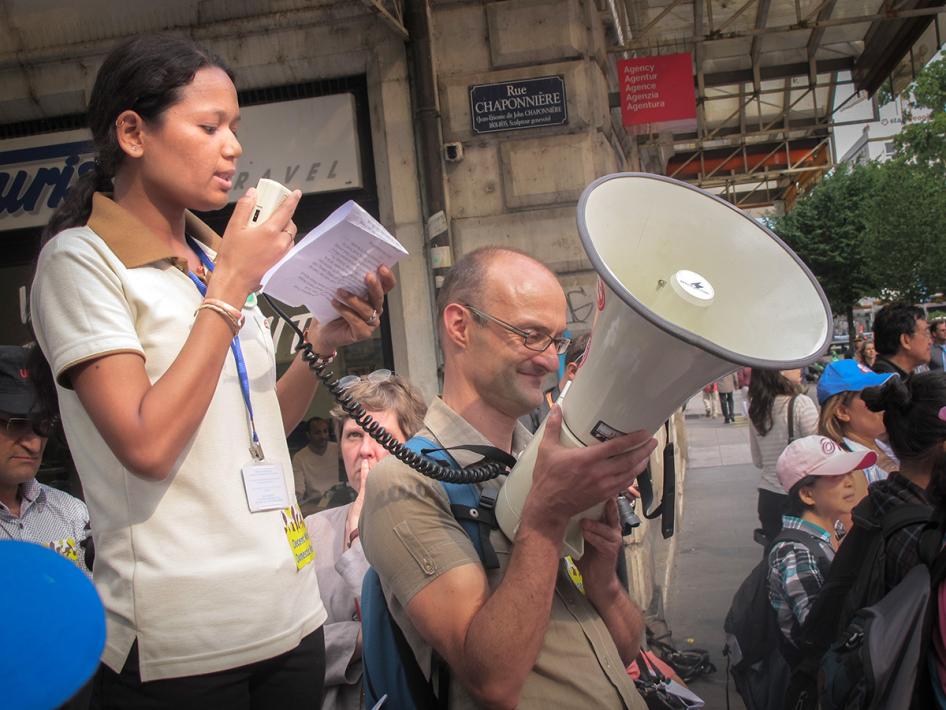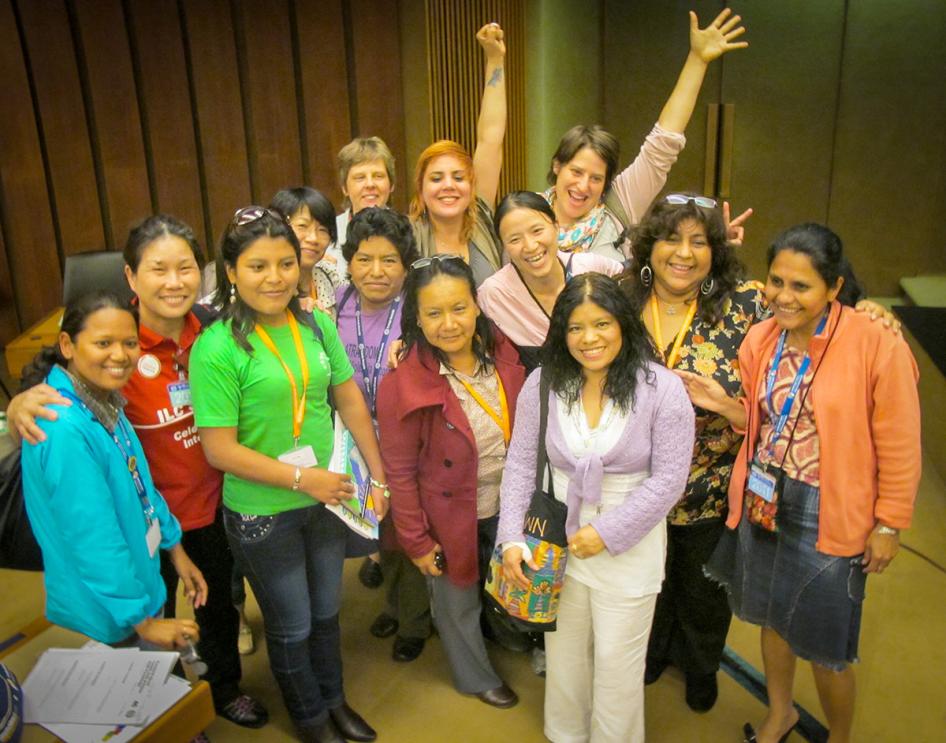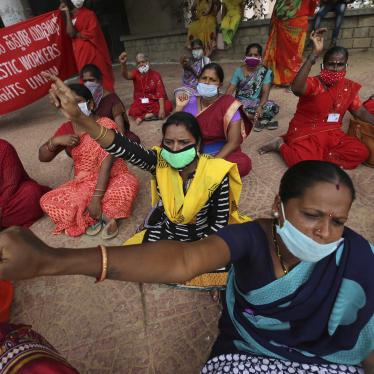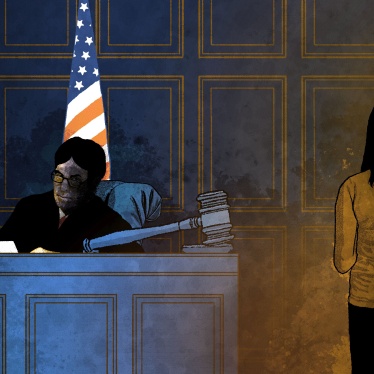Why the need for a global treaty to protect domestic workers?
One in 25 women workers around the globe is a domestic worker. Yet, at the time that we were negotiating the convention, only 10 percent of domestic workers worldwide had the same legal protections as other workers. Most had no minimum wage or working hour regulations. No thought had been given to their occupational safety and health. Hidden in private homes, they were mostly invisible and entirely at the mercy of their employers, and as a result, often faced exploitation and abuse.
It was a global problem that concerned tens of millions of women and girls who worked as nannies, housekeepers, or caregivers, and as such the situation called for international standards that would ensure the recognition and protection of these women and girls as workers.
What made you investigate the plight of domestic workers?
Getting involved in a grassroots organization of immigrant Bangladeshi women workers in New York opened my eyes. I learned that domestic workers were excluded from sexual harassment protections. Many were working from the crack of dawn to late at night, without any days off, and were paid well below minimum wage. Yet, unlike stories of human trafficking, the plight of these women working relentless hours inside homes, caring for children, cleaning houses, and cooking was not making headlines.
I ended up working on domestic workers’ rights for 20 years, including negotiations for the International Labour Organization (ILO) Convention 189, Concerning Decent Work for Domestic Workers in 2010 and 2011. Along with several Human Rights Watch colleagues, we have conducted investigations in more than 15 countries and found very similar dynamics from Saudi Arabia to Singapore, the United Kingdom to Morocco, of domestic workers working around the clock for little or no pay, often living in terrible conditions, and at high risk of verbal, physical, and sexual abuse.
What were some of the worst abuses you documented?
In Lebanon, we uncovered a grim death toll. Domestic workers were dying at a rate of more than one a week – including by jumping off balconies to escape. In Singapore, we found that close to 150 domestic workers had fallen to their death, many after having been asked to clean windows outside of high-rise buildings. We came across migrant domestic workers who were literally held hostage by their employers and not allowed to return home. There were women with burns all over their bodies, as a result of their employer having thrown boiling water over them in a fit of rage. One domestic worker had nails hammered into her body.
Some of these cases made the news and helped us highlight the plight of domestic workers. But the worst cases of abuse shouldn’t overshadow the relentless everyday abuse, exploitation, and isolation many domestic workers suffer.
What has changed for domestic workers since the adoption of the treaty?
What has been exciting to witness is the growing mobilization, power, and reach of the domestic workers’ movement. Years ago, there were whole regions where there were no domestic workers’ organizations at all. Today, the International Domestic Workers Federation (IDWF) has over half a million members around the world.
One of the changes we’ve started to see is that the authorities are investigating cases of abuse. That was rare when I was doing my research.
By now, 32 countries have ratified the Convention, and dozens have made legal changes improving domestic workers’ rights and protections. In Argentina, for example, domestic workers are now entitled to the same rights as all other employees, including paid vacation days, sick leave, and maternity protections. Governments are obliged to address the minimum age for children in domestic work and ensure they attend school, as all children have a right to education. And countries such as Indonesia and Sri Lanka, which have hundreds of thousands of women seeking employment as domestic workers abroad each year, have improved the monitoring of recruitment agencies and provide more services for women. In the Middle East, where countries prior to the Convention had the weakest protections, many now have specific laws protecting domestic workers.
Implementation is still an issue everywhere. But to have a law that is enforceable and to see domestic workers organizing themselves, raising awareness, and having a public voice makes a real difference.
What’s been critical for this success?
The work that led to the Convention remains one of the most inspiring examples of collaboration across movements that I have experienced in my human rights career. But it took a lot of energy and effort to raise awareness before trade unionists came to realize that domestic work is real work, and hence a labor issue, and for women’s rights organizations to see it as a women’s rights issue.
We created briefing materials highlighting the conditions and abuses suffered by millions of domestic workers around the world, and sent letters with our main findings and recommendations to governments ahead of the treaty negotiations. Many had initially expressed opposition to a legally binding convention, arguing that monitoring work in private households was impractical. The fact that we had documented the widespread pattern of abuse and exposed the systemic gaps in existing laws was critical to garnering support for the idea that domestic workers should have a right to equality and protection.
There was also a lot of pushback during the negotiations from representatives for employers with regard to regulating recruitment agencies for domestic workers. These agencies are often involved in abusive practices, charging exorbitant fees that leave domestic workers in debt and thus forcing them to stay with abusive employers. The negotiations were tense. But as an independent organization, Human Rights Watch was in the unique position to be able to reach out to these employers and explain why it was in their interest to have a stronger legal framework for domestic workers.
What role did domestic workers themselves play during the negotiations?
Domestic workers were very much a part of the process. They claimed the space, talked about their own experiences, and showed great leadership. Their testimony was critical, as it provided a face to the issues at hand and highlighted what legal protection would mean for their day-to-day lives. Ever since, the way that domestic workers led and participated in the process has become a role model for other labor movements.
How are you celebrating the treaty’s 10th anniversary?
Alongside our partners, the International Domestic Workers Federation, the International Trade Union Confederation, and Women in the Informal Employment: Globalizing and Organizing, we have put together an anniversary video with domestic worker voices from each region of the world reflecting on the time of the negotiations and what has been accomplished since. The video is a reminder that while abuses can feel entrenched and widespread, change is possible, and movements matter.
Going forward, however, support for domestic workers and their organization remains critical. More countries need to ratify – and implement – Convention 189. Employers need to become more aware of what their responsibilities are. And we need to change attitudes to ensure that domestic work is recognized as the valuable and important work it is.
*This interview has been edited and condensed.
